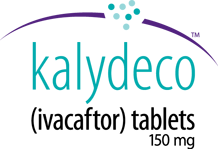 Vertex Pharmaceuticals Incorporated has announced its submission of a New Drug Application (NDA) to the U.S. Food and Drug Administration (FDA) and a Marketing Authorization Application (MAA) to the European Medicine’s Agency (EMA) for a fully co-formulated combination of lumacaftor (400mg q12h) and ivacaftor (250mg q12h) for people with cystic fibrosis (CF) ages 12 and older who have two copies of the F508del mutation in the cystic fibrosis transmembrane conductance regulator (CFTR) gene.
Vertex Pharmaceuticals Incorporated has announced its submission of a New Drug Application (NDA) to the U.S. Food and Drug Administration (FDA) and a Marketing Authorization Application (MAA) to the European Medicine’s Agency (EMA) for a fully co-formulated combination of lumacaftor (400mg q12h) and ivacaftor (250mg q12h) for people with cystic fibrosis (CF) ages 12 and older who have two copies of the F508del mutation in the cystic fibrosis transmembrane conductance regulator (CFTR) gene.
Vertex says there are approximately 22,000 people with CF ages 12 and older who have two copies of the F508del mutation in North America, Europe and Australia, including approximately 8,500 in the United States and 12,000 in Europe.
“The combination of lumacaftor and ivacaftor is the first potential treatment designed to target the underlying cause of cystic fibrosis in people with two copies of the F508del mutation, which is the most common form of the disease,” says Jeffrey Chodakewitz, M.D., Executive Vice President and Chief Medical Officer at Vertex. “Today’s submissions represent important progress toward our ongoing efforts to develop new medicines for the vast majority of people with cystic fibrosis, and we look forward to working closely with regulatory agencies to bring this treatment to eligible patients as quickly as possible.”
Cystic fibrosis is a rare but devastating life-threatening genetic disease that is most common in individuals of European descent, affecting approximately 75,000 people in North America, Europe and Australia, most of whom children and young adults. CF is the most common fatal genetic disease affecting North Americans of that demographic. Currently, the median predicted age of survival for a person with CF is between 34 and 47 years, although the median age of death remains in the mid 20s. There is currently no cure.
[adrotate group=”3″]
CF is caused by a defective or missing transmembrane conductane regulator (CFTR) proteins resulting from mutations in the CFTR gene. Children must inherit two defective CFTR genes — one from each parent — to develop CF. There are more than 1,900 known mutations in the CFTR gene. Some of these mutations, which can be determined by a genetic, or genotyping test, lead to CF by creating non-working or too few CFTR proteins at the cell surface. The defective function or absence of CFTR proteins in people with CF results in poor flow of salt and water into and out of the cell in a number of organs, including the lungs. This leads to the buildup of abnormally thick, sticky mucus that can cause chronic lung infections and progressive lung damage.
 In people with two copies of the F508del mutation, the CFTR protein is not processed and trafficked normally within the cell, resulting in little-to-no CFTR protein at the cell surface. Lumacaftor, a CFTR corrector, is designed to address the processing and trafficking defect of the F508del-CFTR protein, increasing the amount of functional protein at the cell surface where ivacaftor, a CFTR potentiator, can further enhance its function.
In people with two copies of the F508del mutation, the CFTR protein is not processed and trafficked normally within the cell, resulting in little-to-no CFTR protein at the cell surface. Lumacaftor, a CFTR corrector, is designed to address the processing and trafficking defect of the F508del-CFTR protein, increasing the amount of functional protein at the cell surface where ivacaftor, a CFTR potentiator, can further enhance its function.
In the U.S., the combination of lumacaftor and ivacaftor received Breakthrough Therapy Designation in late 2012. The U.S. submission includes a request for Priority Review, which, if granted, would shorten the FDA’s anticipated review time from approximately 12 to 8 months. The European Committee for Medicinal Products for Human Use (CHMP) has granted Vertex’s request for Accelerated Assessment of the MAA, which can be granted to new medicines of major public health interest, and shortens the review time from approximately 210 to 150 days for the CHMP to give an opinion following the start of the review. The CHMP opinion is then reviewed by the European Commission, which generally issues a final decision within three months. If approved, Vertex would then begin the country-by-country reimbursement approval process. Both applications seek approval for a fully co-formulated combination treatment dosed as two tablets every 12 hours (four tablets daily).
The NDA and MAA submissions are based on previously announced data from two global Phase 3 studies, TRAFFIC and TRANSPORT, and the first interim data from the subsequent rollover study in people ages 12 and older who have two copies of the F508del mutation treated with standard-of-care medicines. The TRAFFIC and TRANSPORT studies showed improvements in lung function and other measures of disease, such as pulmonary exacerbations, through 24 weeks of treatment with lumacaftor in combination with ivacaftor. Initial interim data from the rollover study showed that lung function improvements were sustained for 48 total weeks of treatment (24 weeks in TRAFFIC/TRANSPORT + 24 weeks in rollover study).
The company reports that the combination was generally well tolerated in all three studies. In TRAFFIC and TRANSPORT, the most common adverse events were infective pulmonary exacerbation, cough, headache and increased sputum.
Expanded Access Programs
In recognition of the immediate needs of some people with CF, Vertex says it is working to make the combination of lumacaftor and ivacaftor available to people ages 12 and older who have two copies of the F508del mutation, are in critical medical need, and meet additional eligibility criteria. In the U.S., Vertex plans to begin a Phase 3b study for a limited number of people who have severe lung disease in the first quarter of 2015, followed by an expanded access program in the second quarter of the year, pending discussions with the FDA. Vertex says it will also work with regulatory authorities outside the United States toward implementing additional expanded access programs in other countries, with a goal of opening programs for eligible patients in the second quarter of 2015.
 Vertex’s Kalydeco (ivacaftor) is the first medicine to treat the underlying cause of CF in people with specific mutations in the cystic fibrosis transmembrane conductance regulator (CFTR) gene. Known as a CFTR potentiator, Kalydeco is an oral medicine designed to keep CFTR proteins at the cell surface open longer to improve the transport of salt and water across the cell membrane, which helps hydrate and clear mucus from the airways. Vertex retains worldwide rights to develop and commercialize Kalydeco.
Vertex’s Kalydeco (ivacaftor) is the first medicine to treat the underlying cause of CF in people with specific mutations in the cystic fibrosis transmembrane conductance regulator (CFTR) gene. Known as a CFTR potentiator, Kalydeco is an oral medicine designed to keep CFTR proteins at the cell surface open longer to improve the transport of salt and water across the cell membrane, which helps hydrate and clear mucus from the airways. Vertex retains worldwide rights to develop and commercialize Kalydeco.
The Lumacaftor And Ivacaftor Combination
The combination of lumacaftor and ivacaftor is the first potential medicine designed to treat the underlying cause of CF in people with two copies of the F508del mutation, the most common form of the disease.
Known as a CFTR corrector, lumacaftor aims to address the processing and trafficking defect of the F508del-CFTR protein to enable it to reach the cell surface where the CFTR potentiator, ivacaftor, can further enhance the ion channel function of the CFTR protein. Ivacaftor is designed to help the CFTR channel at the cell surface open more often to improve the transport of salt and water across the cells. In combination, lumacaftor and ivacaftor are believed to help hydrate and clear mucus from the airways.
Collaborative History with Cystic Fibrosis Foundation Therapeutics, Inc. (CFFT)
Founded in 1989 in Cambridge, Mass., Vertex initiated its CF research program in 1998 as part of a collaboration with CFFT, the nonprofit drug discovery and development affiliate of the Cystic Fibrosis Foundation. This collaboration was expanded to support the accelerated discovery and development of Vertex’s CFTR modulators.
Vertex today has research and development sites and commercial offices in the United States, Europe, Canada and Australia. For five years in a row, Science magazine has named Vertex one of its Top Employers in the life sciences. For additional information and the latest updates from the company, visit:
http://www.vrtx.com
Sources:
Vertex Pharmaceuticals Incorporated

